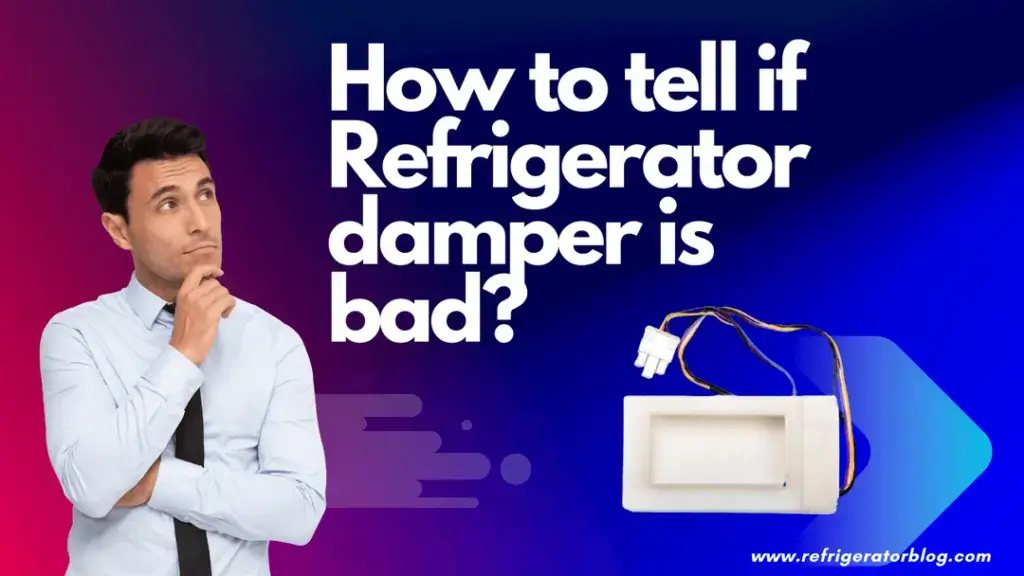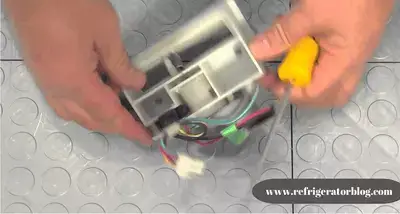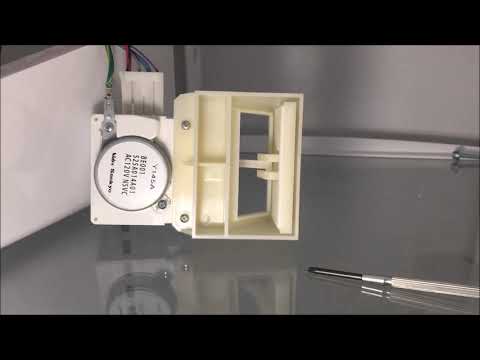How do you tell if a refrigerator damper is bad? Some telltale signs can help you decide whether or not it’s time to replace your refrigerator damper. Here are the key things to consider when determining if your refrigerator damper needs attention.
Check the temperature in your fridge and freezer compartments. If one side seems warmer than the other, or both are too warm, the damper could be faulty and need replacing. Additionally, check for any strange sounds inside your fridge—these can indicate an issue with airflow and point to a broken damper.
Table Of Contents

How does a Damper work?
A damper controls airflow through a duct or chimney using a plate or flap that can be opened or closed manually or automatically. When open, it allows air or gases to flow freely and regulate temperature, remove pollutants, and control odors. When closed, it blocks airflow to prevent exchange. Dampers are used in HVAC systems, chimneys, and industrial processes to maintain efficiency and safety by regulating airflow and preventing harmful gas buildup.
Signs of a bad Refrigerator damper?
Here are some signs of a bad refrigerator damper you should look out for.
- Uneven temperature: If some parts of your fridge are too cold while others are too warm, it may be a sign that the damper is not functioning properly.
- Spoiled food: Damper malfunction can cause quick food spoilage and excess moisture in the fridge.
- Strange noises: Strange fridge noises may indicate an issue with the damper’s opening and closing mechanism.
- Frost buildup: Frost buildup in the refrigerator or freezer could be due to a closed drag not letting enough cold air circulate.
- High energy bills: A faulty pain can cause an increase in energy bills as the fridge works harder to maintain the desired temperature, even when usage habits have not changed.
How to test the Refrigerator damper?

If you’ve noticed that your refrigerator isn’t keeping the temperature cool enough, it might be time to check the damper. Fortunately, you can quickly test your refrigerator damper by following the steps below.
- Locate the drag: The muffler is typically located at the top or bottom of the refrigerator compartment and is a small vent with a flap.
- Adjust the temperature setting: Set the temperature on the refrigerator to the coldest setting.
- Observe the damper: Look inside the refrigerator compartment and observe the damper flap. It should be closed when the fridge is running.
- Open the refrigerator door: Open the door and keep the damper flap again. It should open when the door is opened to allow air to flow into the compartment.
- Close the door: Close the door and observe the damper again. It should close within a few seconds.
- Check the temperature: Wait a few minutes and check the temperature inside the refrigerator compartment. It should start to decrease if the damper is working properly.
How to fix or replace a bad Damper?
A damper is an important component of a system that helps to regulate the flow of air, gas, or other fluids. If your damper is not functioning properly, it can cause various problems, including decreased efficiency and increased energy costs. Here are some steps you can take to fix a bad damper:
- Identify the problem: The first step in improving a bad muffler is to identify the problem. There are a few common issues that can arise, such as the damper being stuck in an open or closed position or the damper not opening or closing fully.
- Check for obstructions: One of the most common reasons for a drag not working properly is due to obstacles, such as debris or rust, blocking its movement. Check for any obstructions and remove them if possible.
- Lubricate the damper: If the drag is not moving smoothly, it may need lubrication. Apply a small amount of lubricant to the pivot points of the pain and move it back and forth to distribute the oil evenly.
- Adjust the damper settings: If the damper is not opening or closing fully, it may need to be adjusted. Consult the owner’s manual for instructions on how to change the damper settings.
Replace the bad Damper
If none of the above steps fixes the problem, it may be necessary to replace the damper. If you’re handy with tools and have some experience in home repairs, replacing the bad refrigerator damper may be an easy fix.
- The first step in replacing your refrigerator’s damaged damper is to unplug the fridge from its power source and remove any food inside.
- Then you’ll need to locate the bad damper on the inside wall of your refrigerator or freezer unit. It should look like a metal flap with two screws holding it in place.
- Once you’ve located it, use a screwdriver to remove the screws before carefully removing the old damper from its compartment.
- Then install the replacement part with screws or clips as specified by its manufacturer before putting everything back together.
Contact a professional HVAC technician if you need help completing the replacement task.
What to do if refrigerator damper control is stuck open?
If your refrigerator damper control is stuck open, it can cause your fridge to become too cold and may result in your food freezing. However, you can take several steps to address this issue before contacting a professional.
- First, locate the damper control and inspect it for any physical damage or obstructions that may be preventing it from closing properly. Next, check the damper for any physical damage or obstacles that may stop it from closing properly.
- If the damper is dirty or has debris buildup, you can clean it using a soft brush or cloth. This may help it to move more freely and close properly. Additionally, try resetting the damper control by turning off the refrigerator for a few minutes and then turning it back on again. This may help to reset the power and allow it to function properly.
If you have tried all of these steps and the issue persists, replacing the damper may be necessary.
Preventing Damper issues
To prevent damper issues and ensure the efficient operation of your HVAC system, follow these steps:
- Schedule regular maintenance checks.
- Replace air filters regularly.
- Keep ducts clean.
- Check for obstructions.
- Apply lubricant to pivot points.
- Adjust damper settings as needed.
Final words
In conclusion, a bad damper is one of the most common causes of a refrigerator not cooling properly. Thankfully, it’s an easy problem to identify and fix. Begin your investigation by checking the damper and its control assembly, then follow the steps outlined in this article to replace the parts if necessary. Remember to unplug your fridge before attempting any repairs yourself! Finally, if all else fails, call a professional appliance technician to get the job done right.
